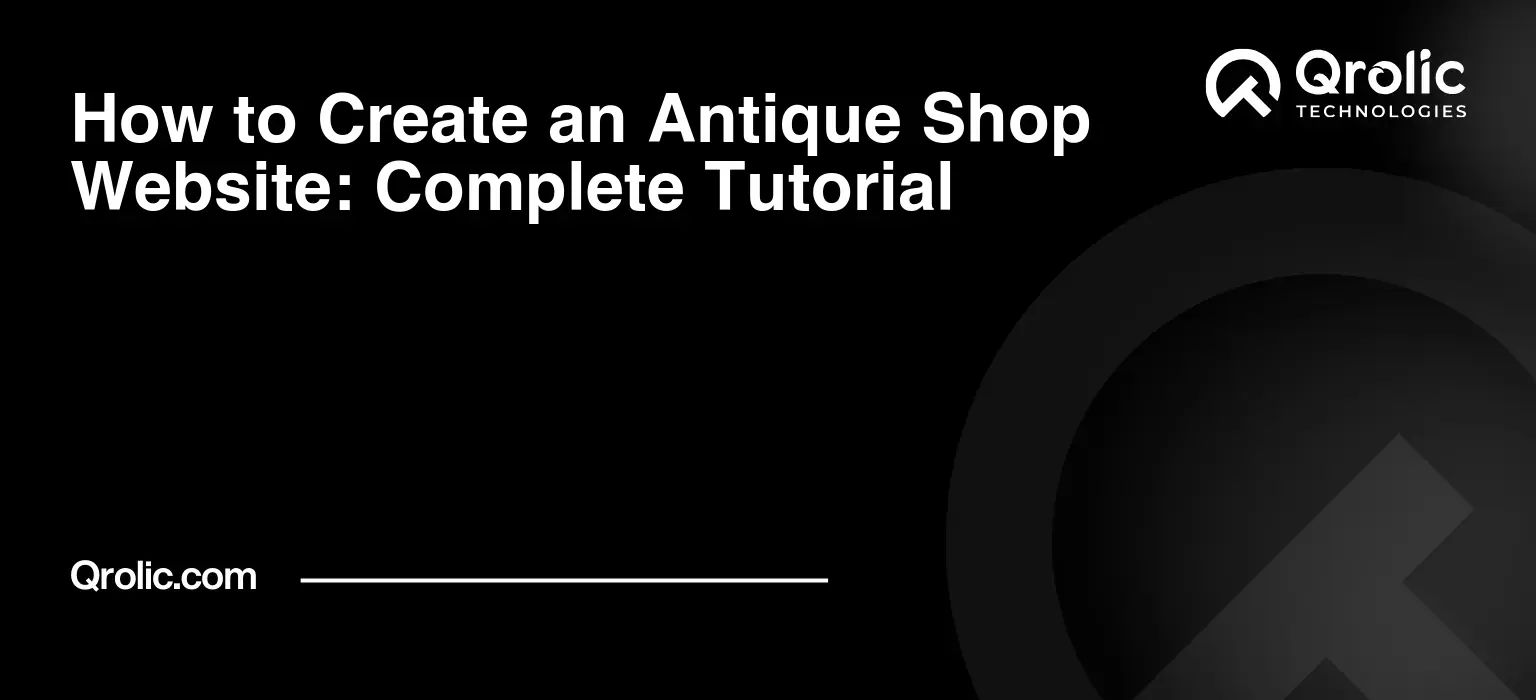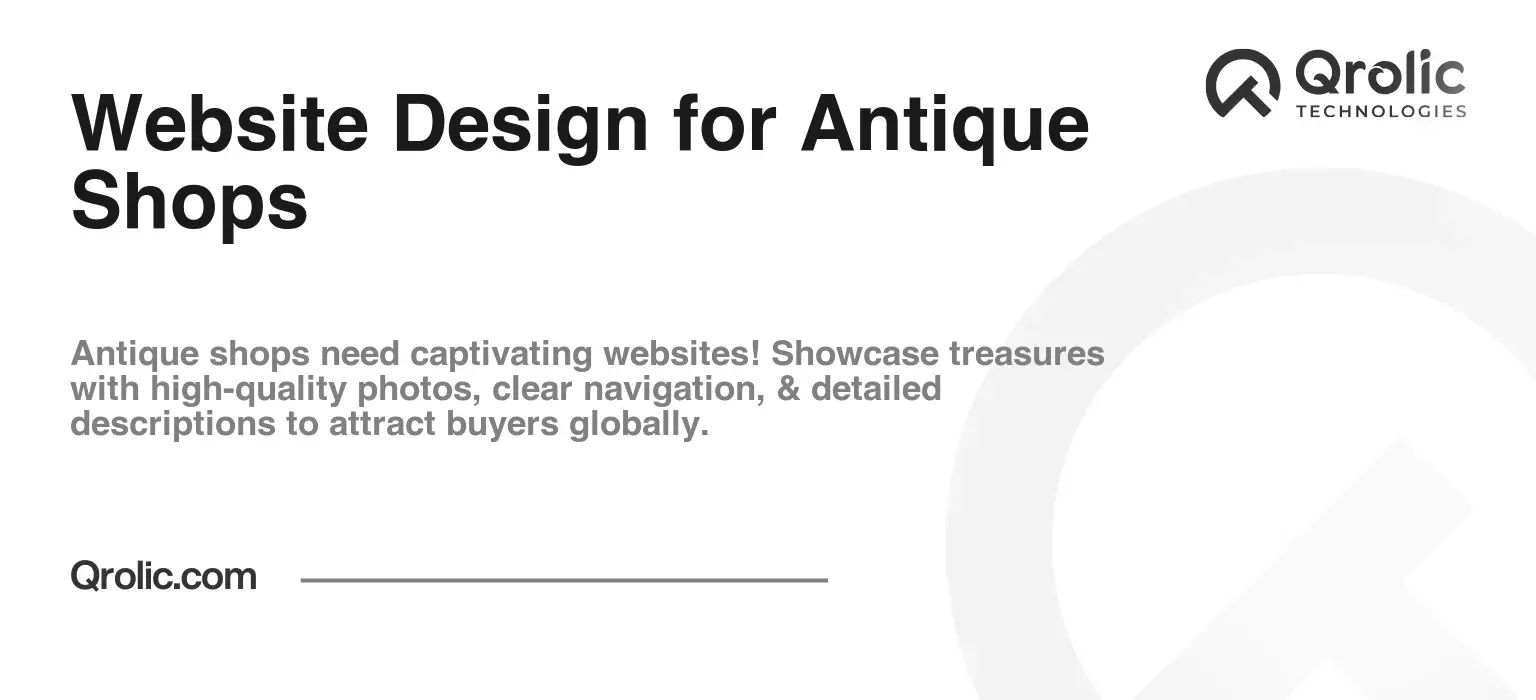Quick Summary:
- Plan your online shop, define goals, and target audience.
- Choose the right platform like Shopify for your needs.
- Showcase antiques with high-quality photos and detailed stories.
- Optimize with SEO, social media, and email marketing.
Table of Contents
- The Allure of Antiques: Why Take Your Shop Online?
- Step 1: Defining Your Online Presence – Planning & Strategy
- 1.1. Defining Your Target Audience: Who are You Selling To?
- 1.2. Setting Clear Goals: What Do You Want to Achieve?
- 1.3. Competitor Analysis: Learn from the Best (and the Worst)
- 1.4. Keyword Research: Finding What People Are Searching For
- 1.5. Defining Your Brand Identity: What Makes Your Shop Unique?
- Step 2: Choosing the Right Platform: Website Builders vs. E-Commerce Platforms
- 2.1. Website Builders: User-Friendly and Affordable
- 2.2. E-Commerce Platforms: Powerful and Scalable
- 2.3. Etsy: A Specialized Option for Vintage Retail
- 2.4. Choosing the Right Platform: A Decision Guide
- Step 3: Setting Up Your Website: A Step-by-Step Guide
- 3.1. Creating a Shopify Account: Your First Step
- 3.2. Choosing a Theme: Design for Vintage Appeal
- 3.3. Adding Products: Showcasing Your Antiques
- 3.4. Setting Up Navigation: Making Your Website Easy to Use
- 3.5. Setting Up Payments: Getting Paid for Your Treasures
- 3.6. Setting Up Shipping: Delivering Your Antiques Safely
- 3.7. Setting Up Legal Pages: Protecting Your Business
- 3.8. Connecting a Domain Name: Making Your Website Accessible
- Step 4: Optimizing Your Website: Attracting Customers and Driving Sales
- 4.1. SEO Optimization: Ranking Higher in Search Results
- 4.2. Content Marketing: Engaging Your Audience and Building Authority
- 4.3. Social Media Marketing: Connecting with Customers and Promoting Your Shop
- 4.4. Email Marketing: Nurturing Leads and Driving Repeat Sales
- Step 5: Maintaining and Growing Your Website: Long-Term Success
- 5.1. Regularly Update Your Website: Keeping Things Fresh
- 5.2. Monitor Your Website Performance: Tracking Your Progress
- 5.3. Adapt to Changing Trends: Staying Ahead of the Curve
- 5.4. The Importance of Professional Support: Qrolic Technologies
- Conclusion: Embrace the Digital Age and Showcase Your Treasures
The Allure of Antiques: Why Take Your Shop Online?
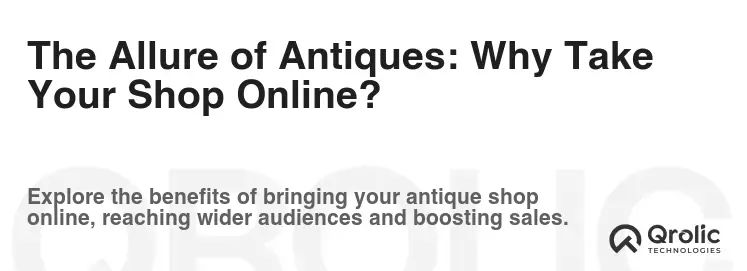
Why even bother with a website for your antique shop? Isn’t the charm of antiques all about the physical hunt, the tactile experience, the musty smell of history clinging to a forgotten object? Absolutely! But think of your website not as a replacement for that magic, but as a portal to it.
- Expand Your Reach: You’re no longer limited by geography. Collectors across the globe can discover your unique treasures.
- 24/7 Accessibility: Your shop is always open, even while you’re sleeping.
- Enhanced Visibility: Attract new customers actively searching for specific items online. Imagine someone desperately searching for a “Victorian mourning brooch” and your shop popping up.
- Build a Community: Foster a loyal customer base through blog posts, newsletters, and online interaction. Share the stories behind the antiques, creating a deeper connection.
- Simplified Inventory Management: A website allows you to track your inventory, making it easier to manage your stock and identify popular items.
- Increased Credibility: A professional-looking website instantly lends your shop an air of legitimacy and trustworthiness.
- Showcase Rare and Valuable Items: High-quality images and detailed descriptions allow you to highlight the unique features and provenance of your most prized possessions.
- Cater to a New Generation: Younger collectors are increasingly turning to online platforms to discover and purchase antiques.
This complete tutorial will guide you through creating an antique shop website that not only showcases your unique offerings but also attracts a wider audience and boosts your business. From choosing the right platform to mastering vintage retail design, we’ll cover everything you need to succeed.
Step 1: Defining Your Online Presence – Planning & Strategy

Before you even think about coding or design, you need a solid plan. What’s the purpose of your website? Who are you trying to reach? What are your goals?
1.1. Defining Your Target Audience: Who are You Selling To?
Understanding your ideal customer is crucial. Are you targeting:
- Serious Collectors: They’re knowledgeable, discerning, and looking for specific, high-value items.
- Casual Browsers: They’re drawn to the aesthetics and history of antiques but may be price-conscious.
- Interior Designers: They’re sourcing unique pieces to complement their clients’ projects.
- Nostalgic Buyers: They’re seeking items that evoke memories of the past.
Knowing your target audience will inform your design choices, your product descriptions, and your marketing strategy.
1.2. Setting Clear Goals: What Do You Want to Achieve?
What do you hope to achieve with your website? Some common goals include:
- Increase Sales: The primary objective for most antique shop websites.
- Generate Leads: Collect contact information from potential customers to nurture relationships.
- Build Brand Awareness: Establish your shop as a reputable source for antiques.
- Drive Traffic to Your Physical Store: Use your website to promote local events and special offers.
- Establish Authority: Position yourself as an expert in a particular area of antiques.
Clearly defining your goals will help you measure the success of your website.
1.3. Competitor Analysis: Learn from the Best (and the Worst)
Take a look at other antique shops online. What are they doing well? What could they improve? Analyze their:
- Website Design: Is it visually appealing and easy to navigate?
- Product Descriptions: Are they detailed and informative?
- Pricing Strategy: Are their prices competitive?
- Marketing Tactics: How are they promoting their website and products?
- Customer Service: How responsive and helpful are they?
Don’t just copy your competitors, but learn from their successes and failures. Identify opportunities to differentiate your shop and offer something unique.
1.4. Keyword Research: Finding What People Are Searching For
This is where SEO (Search Engine Optimization) comes in. You need to understand what keywords people are using when they search for antiques online. Use tools like:
- Google Keyword Planner: A free tool from Google that allows you to research keywords and estimate search volume.
- Ahrefs: A paid tool that provides more detailed keyword research and competitor analysis.
- SEMrush: Another paid tool offering comprehensive SEO analysis and keyword research capabilities.
Focus on keywords that are relevant to your niche and have a reasonable search volume. Examples include:
- “Vintage jewelry for sale”
- “Antique furniture online”
- “Mid-century modern decor”
- “Victorian silver tea set”
- “Art Deco lamps”
Incorporate these keywords naturally into your website content, including product descriptions, blog posts, and page titles.
1.5. Defining Your Brand Identity: What Makes Your Shop Unique?
Your brand identity is the personality of your shop. It’s what makes you stand out from the competition. Consider:
- Your Shop’s History: What’s the story behind your shop?
- Your Specialization: Do you focus on a particular era, style, or type of antique?
- Your Values: What’s important to you and your customers?
- Your Tone of Voice: How do you communicate with your customers (formal, informal, friendly, authoritative)?
Use your brand identity to guide your design choices and create a consistent experience across your website and other marketing channels. This contributes significantly to vintage retail design strategies.
Step 2: Choosing the Right Platform: Website Builders vs. E-Commerce Platforms
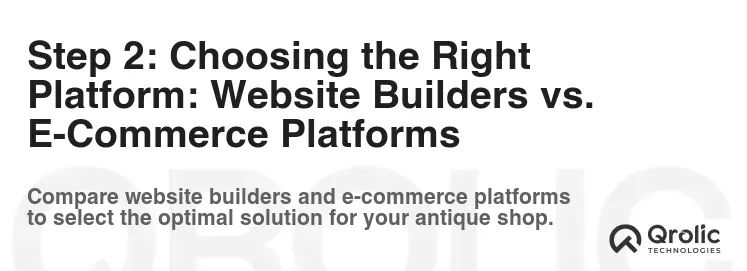
Now that you have a plan, it’s time to choose the platform for your website. You have two main options: website builders and e-commerce platforms.
2.1. Website Builders: User-Friendly and Affordable
Website builders are drag-and-drop platforms that make it easy to create a website without any coding knowledge. Popular options include:
- Wix: Offers a wide range of templates and a user-friendly interface.
- Squarespace: Known for its clean, modern designs and strong e-commerce features.
- Weebly: A simple and affordable option for small businesses.
Pros:
- Easy to use, even for beginners.
- Affordable, with a range of pricing plans.
- Many templates to choose from.
- Built-in SEO tools.
Cons:
- Limited customization options.
- May not be suitable for large or complex websites.
- Can be less flexible than e-commerce platforms.
Best for: Small antique shops with a limited budget and basic e-commerce needs.
2.2. E-Commerce Platforms: Powerful and Scalable
E-commerce platforms are designed specifically for selling products online. They offer more advanced features and customization options than website builders. Popular options include:
- Shopify: The leading e-commerce platform, known for its ease of use, scalability, and extensive app store.
- Etsy: A marketplace specifically for handmade, vintage, and craft items.
- WooCommerce (WordPress Plugin): A flexible and customizable option that integrates with WordPress.
- BigCommerce: A powerful platform designed for larger businesses with complex needs.
Pros:
- More advanced features, such as inventory management, shipping integrations, and marketing tools.
- Greater customization options.
- Scalable to accommodate growing businesses.
- Excellent SEO capabilities.
Cons:
- More expensive than website builders.
- Can be more complex to set up and manage.
- May require some coding knowledge.
Best for: Antique shops with a large inventory, a desire for advanced features, and a willingness to invest in a more robust platform.
2.3. Etsy: A Specialized Option for Vintage Retail
Etsy deserves a special mention because it’s a marketplace specifically designed for handmade, vintage, and craft items.
Pros:
- Built-in audience of buyers interested in antiques and vintage items.
- Easy to set up and manage a shop.
- Low startup costs.
Cons:
- High competition.
- Limited control over branding and website design.
- Fees on every sale.
Best for: Antique shops looking to reach a large audience quickly and easily, without investing in their own website. However, relying solely on Etsy means you’re subject to their rules and algorithm changes. Ideally, it should complement your own website.
2.4. Choosing the Right Platform: A Decision Guide
Here’s a quick guide to help you choose the right platform for your antique shop website:
- Budget: If you’re on a tight budget, a website builder or Etsy might be the best option.
- Technical Skills: If you’re not comfortable with coding, a website builder or Shopify might be a better choice.
- Inventory Size: If you have a large inventory, an e-commerce platform like Shopify or BigCommerce is recommended.
- Customization Needs: If you need a highly customized website, WooCommerce or BigCommerce offer the most flexibility.
- Marketing Strategy: If you want to focus on SEO and content marketing, choose a platform with strong SEO capabilities.
Step 3: Setting Up Your Website: A Step-by-Step Guide
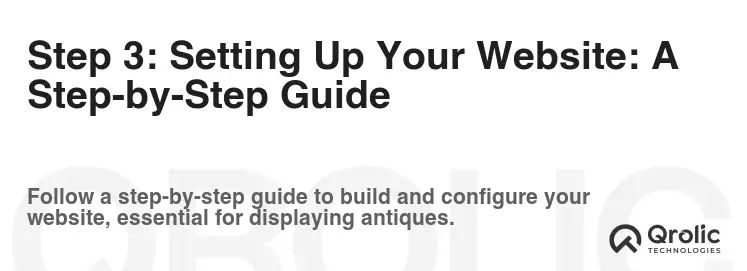
Once you’ve chosen a platform, it’s time to set up your website. This section will provide a step-by-step guide for using Shopify, the recommended platform for most antique shops.
3.1. Creating a Shopify Account: Your First Step
- Go to Shopify.com and sign up for a free trial.
- Enter your email address, password, and shop name.
- Follow the prompts to set up your account and provide basic information about your business.
3.2. Choosing a Theme: Design for Vintage Appeal
A theme is a pre-designed template that determines the look and feel of your website. Choose a theme that is visually appealing and reflects the style of your antiques. Look for themes with:
- Clean and Elegant Design: Avoid clutter and focus on showcasing your products.
- High-Quality Image Support: Your antiques deserve to be displayed in the best possible light.
- Mobile Responsiveness: Ensure your website looks good on all devices.
- Customizable Options: Choose a theme that allows you to easily change colors, fonts, and layouts.
- Vintage or Classic Aesthetic: Select a theme that evokes a sense of history and charm.
Shopify offers a wide range of free and paid themes. Browse the Shopify Theme Store to find the perfect theme for your vintage retail design.
Tip: Consider using a theme with a “lookbook” feature to showcase your antiques in a stylish and curated manner.
3.3. Adding Products: Showcasing Your Antiques
This is the heart of your antique shop website. Take high-quality photos of your antiques from multiple angles. Write detailed and informative descriptions that highlight the unique features and history of each item.
- In the Shopify admin panel, go to Products > Add product.
- Enter the product title, description, and price.
- Upload high-quality images of the product.
- Add the product to relevant collections (categories).
- Set the inventory quantity and shipping options.
- Add tags to help customers find the product.
- Optimize the product description for SEO by including relevant keywords.
Key Considerations for Product Descriptions:
- Accuracy: Be honest about the condition of the antique. Disclose any flaws or imperfections.
- Provenance: If known, provide information about the history and origin of the item.
- Materials: Describe the materials used to create the antique.
- Dimensions: Include accurate measurements of the item.
- Storytelling: Craft a compelling narrative that captures the essence of the antique and its historical significance.
- Keywords: Incorporate relevant keywords naturally into the description.
- Call to Action: Encourage customers to purchase the item.
3.4. Setting Up Navigation: Making Your Website Easy to Use
A well-organized navigation menu is essential for a user-friendly website. Create clear and intuitive categories to help customers find what they’re looking for.
- In the Shopify admin panel, go to Online Store > Navigation.
- Create a main menu and add links to your product collections, pages, and blog.
- Use descriptive labels for your menu items.
- Consider using drop-down menus for larger categories.
Example Menu Structure:
- Home
- Shop
- Furniture
- Jewelry
- Decor
- Collectibles
- About Us
- Blog
- Contact Us
3.5. Setting Up Payments: Getting Paid for Your Treasures
You need to set up a payment gateway to accept payments from customers online. Shopify offers its own payment gateway, Shopify Payments, which is easy to set up and use. You can also integrate with other popular payment gateways, such as PayPal and Stripe.
- In the Shopify admin panel, go to Settings > Payments.
- Choose a payment gateway and follow the instructions to set it up.
- Make sure to test your payment gateway to ensure it’s working properly.
3.6. Setting Up Shipping: Delivering Your Antiques Safely
Shipping antiques requires special care and attention. You need to choose a shipping carrier that specializes in handling fragile items. Consider offering multiple shipping options to accommodate different budgets and timelines.
- In the Shopify admin panel, go to Settings > Shipping.
- Set up your shipping zones and rates.
- Consider offering free shipping on orders over a certain amount.
- Use appropriate packaging materials to protect your antiques during shipping.
- Insure your shipments against damage or loss.
Tip: Partner with a local shipping company that has experience handling antiques and fragile items.
3.7. Setting Up Legal Pages: Protecting Your Business
You need to create legal pages for your website, such as a privacy policy, terms of service, and return policy. These pages protect your business and ensure that you comply with legal requirements.
- Create a privacy policy that explains how you collect, use, and protect customer data.
- Create terms of service that outline the rules and regulations for using your website.
- Create a return policy that specifies the conditions under which customers can return items.
- Consult with an attorney to ensure that your legal pages are compliant with all applicable laws.
3.8. Connecting a Domain Name: Making Your Website Accessible
A domain name is the address of your website (e.g., www.yourantiqueshop.com). You need to purchase a domain name and connect it to your Shopify store.
- Purchase a domain name from a domain registrar, such as GoDaddy or Namecheap.
- In the Shopify admin panel, go to Online Store > Domains.
- Connect your domain name to your Shopify store by following the instructions provided by your domain registrar and Shopify.
Step 4: Optimizing Your Website: Attracting Customers and Driving Sales
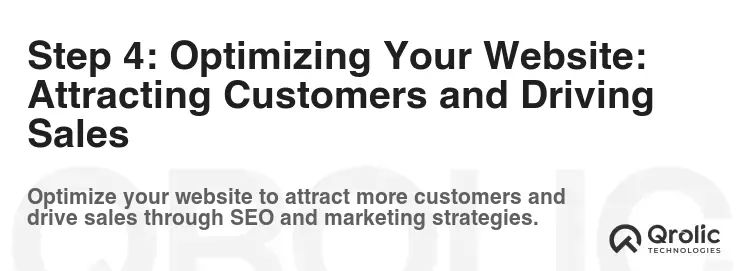
Once your website is set up, you need to optimize it to attract customers and drive sales. This involves SEO, content marketing, and social media marketing.
4.1. SEO Optimization: Ranking Higher in Search Results
SEO is the process of optimizing your website to rank higher in search engine results pages (SERPs). This involves:
- Keyword Research: Identifying the keywords that your target audience is using to search for antiques online.
- On-Page Optimization: Optimizing your website content, including page titles, meta descriptions, and product descriptions, for relevant keywords.
- Off-Page Optimization: Building backlinks from other websites to your website.
- Technical SEO: Ensuring that your website is technically sound and easy for search engines to crawl and index.
Key SEO Tips for Antique Shop Websites:
- Use relevant keywords in your page titles and meta descriptions.
- Write detailed and informative product descriptions that include relevant keywords.
- Optimize your images with descriptive alt tags.
- Build backlinks from other websites, such as antique blogs and directories.
- Submit your website to search engines like Google and Bing.
- Create a sitemap to help search engines crawl your website more efficiently.
- Ensure your website is mobile-friendly.
- Improve your website’s page speed.
4.2. Content Marketing: Engaging Your Audience and Building Authority
Content marketing is the process of creating and distributing valuable, relevant, and consistent content to attract and engage your target audience. This can include:
- Blog Posts: Write blog posts about the history of antiques, collecting tips, and the latest trends in the antique market.
- Articles: Publish articles on other websites and blogs about your area of expertise.
- Videos: Create videos showcasing your antiques and providing tips on how to care for them.
- Infographics: Create infographics that visualize data and information about antiques.
- Social Media Posts: Share your content on social media platforms like Facebook, Instagram, and Pinterest.
Content Ideas for Antique Shop Websites:
- “The History of Victorian Jewelry”
- “How to Identify Authentic Antique Furniture”
- “Collecting Tips for Beginner Antique Collectors”
- “The Latest Trends in Mid-Century Modern Decor”
- “Caring for Your Antique Silver Tea Set”
- “The Value of Antique Clocks”
4.3. Social Media Marketing: Connecting with Customers and Promoting Your Shop
Social media marketing is the process of using social media platforms to connect with customers, promote your shop, and drive traffic to your website.
- Choose the Right Platforms: Focus on the platforms that your target audience uses most frequently. For antique shops, Instagram, Pinterest, and Facebook are often the most effective.
- Share High-Quality Images and Videos: Showcase your antiques in visually appealing ways.
- Engage with Your Followers: Respond to comments and questions, and participate in relevant conversations.
- Run Contests and Giveaways: Generate excitement and attract new followers.
- Use Hashtags: Help people find your content by using relevant hashtags.
- Run Targeted Ads: Reach a wider audience by running targeted ads on social media platforms.
Social Media Content Ideas for Antique Shops:
- “New Arrivals: Check out our latest collection of antique jewelry!”
- “Antique of the Day: This stunning Victorian brooch is a must-have for any collector.”
- “Behind the Scenes: A glimpse into our shop and the process of restoring antique furniture.”
- “Collecting Tip: Learn how to identify authentic antique porcelain.”
- “Customer Spotlight: Share photos of your customers showcasing their antique purchases.”
4.4. Email Marketing: Nurturing Leads and Driving Repeat Sales
Email marketing is the process of using email to communicate with customers, promote your shop, and drive sales.
- Build an Email List: Offer incentives for customers to sign up for your email list, such as a discount or free shipping.
- Segment Your Email List: Segment your email list based on customer interests and purchase history.
- Send Targeted Emails: Send targeted emails that are relevant to each segment of your email list.
- Promote Sales and Special Offers: Announce sales, special offers, and new arrivals to your email subscribers.
- Share Valuable Content: Share valuable content, such as blog posts and articles, with your email subscribers.
Email Marketing Ideas for Antique Shops:
- “Welcome Email: Thank new subscribers for joining your email list and offer a discount on their first purchase.”
- “New Arrivals Email: Announce new arrivals to your email subscribers.”
- “Sale Email: Promote upcoming sales and special offers.”
- “Abandoned Cart Email: Remind customers about items they left in their shopping cart.”
- “Thank You Email: Thank customers for their recent purchase and ask for feedback.”
Step 5: Maintaining and Growing Your Website: Long-Term Success
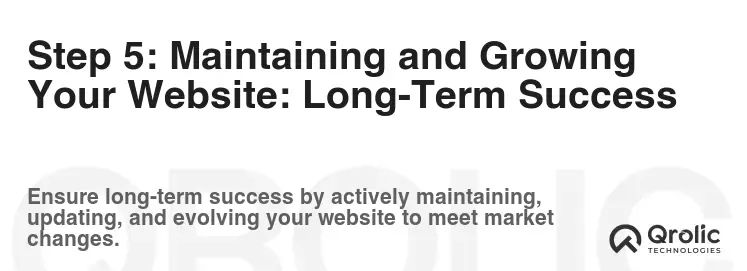
Creating an antique shop website isn’t a one-time task. It requires ongoing maintenance and effort to ensure long-term success.
5.1. Regularly Update Your Website: Keeping Things Fresh
- Add New Products Regularly: Keep your website fresh and engaging by adding new products on a regular basis.
- Update Your Content: Update your content to reflect changes in your inventory, pricing, and policies.
- Keep Your Website Software Up to Date: Install updates for your website platform, themes, and plugins to ensure security and functionality.
5.2. Monitor Your Website Performance: Tracking Your Progress
- Use Google Analytics: Track your website traffic, bounce rate, and conversion rate.
- Monitor Your SEO Rankings: Track your website’s ranking for relevant keywords.
- Track Your Sales: Monitor your sales and identify your best-selling products.
- Gather Customer Feedback: Ask customers for feedback on your website and products.
5.3. Adapt to Changing Trends: Staying Ahead of the Curve
- Stay Up-to-Date on the Latest Trends in the Antique Market: Attend antique shows, read industry publications, and follow antique experts on social media.
- Adapt Your Website Design to Reflect Current Trends: Keep your website design fresh and modern by adapting to current trends.
- Experiment with New Marketing Tactics: Try new marketing tactics to reach a wider audience and drive sales.
- Consider Augmented Reality (AR): Allow customers to virtually “place” antiques in their homes before buying.
5.4. The Importance of Professional Support: Qrolic Technologies
Creating and maintaining a successful antique shop website can be challenging, especially if you lack technical expertise. That’s where professional support comes in.
Qrolic Technologies (https://qrolic.com/) offers a range of services to help you create, optimize, and maintain your website, including:
- Website Design and Development: Create a custom website that reflects your brand and meets your specific needs.
- E-Commerce Development: Build a robust and scalable e-commerce platform to sell your antiques online.
- SEO Optimization: Improve your website’s ranking in search engine results pages.
- Content Marketing: Create engaging and informative content to attract and engage your target audience.
- Social Media Marketing: Manage your social media presence and drive traffic to your website.
- Website Maintenance: Provide ongoing maintenance and support to ensure your website is running smoothly.
By partnering with Qrolic Technologies, you can focus on what you do best – sourcing and selling beautiful antiques – while they handle the technical aspects of your website. They understand the nuances of vintage retail design and can help you create an online presence that truly reflects the charm and character of your shop.
Conclusion: Embrace the Digital Age and Showcase Your Treasures
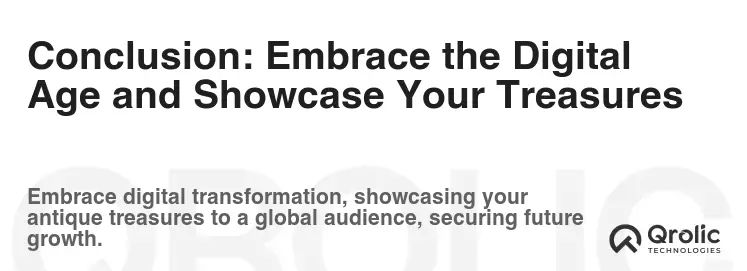
Creating an antique shop website is an investment that can pay off handsomely. By following the steps outlined in this complete tutorial, you can create a website that attracts a wider audience, drives sales, and establishes your shop as a reputable source for antiques. Remember to focus on providing a high-quality user experience, showcasing your antiques in the best possible light, and staying up-to-date on the latest trends in the antique market. With dedication and effort, you can successfully embrace the digital age and share your passion for antiques with the world. Don’t forget to explore how vintage retail design principles can be applied to your online storefront to create a truly captivating experience for your customers.
